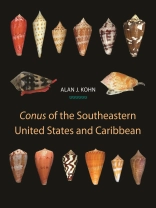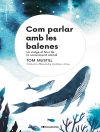Conus is the largest genus of animals in the sea, occurring throughout the world’s tropical and subtropical oceans and contributing significantly to marine biodiversity. The shells of these marine mollusks are prized for their amazing variety and extraordinary beauty. The neurotoxic venoms they produce—injected by a hollow, harpoon-like tooth into prey animals that are then paralyzed and swallowed whole—have a range of pharmaceutical applications, from painkillers to antidepressants. This beautifully illustrated book identifies 53 valid species of the southeastern United States and the Caribbean, a region that supports a diverse but taxonomically challenging group of Conus. Introductory chapters cover the evolution and phylogeny of the genus, and notes on methodology are provided. Detailed species accounts describe key identification features, taxonomy, distribution, ecology, toxicology, life history, and evolutionary relationships. The book includes more than 2, 100 photos of shells on 109 splendid color plates; more than 100 additional photos, many depicting live animals in color; and 35 color distribution maps.
- Identifies 53 valid species—the first reassessment of western Atlantic Conus in more than seventy years
- Features more than 2, 100 photos of shells on 109 color plates
- Blends the traditional shell-character approach to identification with cutting-edge shell and radular tooth morphometrics and molecular genetic analyses
- Includes color images of live animals as well as color distribution maps
عن المؤلف
Alan J. Kohn is professor emeritus of biology at the University of Washington. His books include
Manual of the Living Conidae: Indo-Pacific Region and
Life History and Biogeography: Patterns in Conus.












